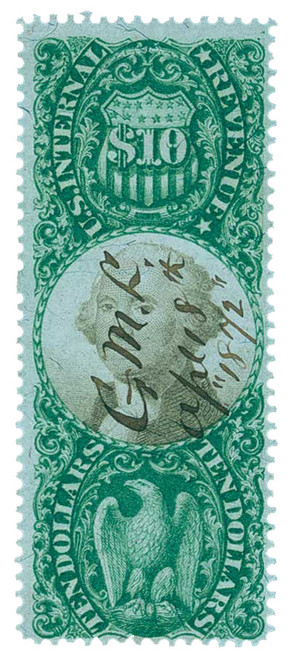1872 $20 Revenue Stamp
Printed on Violet "Chameleon" Paper with Silk Fibers
Shortly after the First Issue Revenue stamps were released, officials found proof the stamps were being cleaned and reused, causing the loss of a significant amount of government revenue.
To combat the fraud, a Second Issue was ordered with new designs and ink colors. The stamps were printed on a patented “chameleon” paper containing silk fibers.
Each stamp in the Second Issue featured a different design, but the stamp size and the makeup of the printing plates are the same as the First Issue. The Second Issue Revenue stamps were released in 1871.
Almost immediately, complaints were received about the color of the Second Issue stamps. Because all but the highest values were printed in shades of blue and black, clerks and customers had difficulty telling the denominations apart.
To eliminate confusion, a Third Issue was ordered in 1871. Although the Second Issue plates were used, the new issue featured stamps in shades of orange, brown, green, claret, and vermilion.
U.S. Revenue Stamps –
Expand Your Collection or Start a New One
Intricate Revenue stamps feature the rich detail and
historical importance of classic U.S. stamps for a fraction of the price.
When the Civil War erupted in 1861, the country was on the verge of bankruptcy. A plan was developed to generate internal revenue – money collected from taxes placed on domestic items such as tobacco, alcohol, medicine, perfume and playing cards. Stamps were provided as proof of payment. Examining used U.S. Revenue stamps offers a window into the past – the government required several unusual cancellation techniques such as private cancels, manuscript initials and perforated initials.
The same legislation that created these stamps also created the Internal Revenue Service (IRS) and the Bureau of Engraving and Printing (BEP).
Until 1862, specific Revenue stamps were required for many taxable items – leading to a wealth of interesting stamps for modern collectors. Imperforate and “part-perf” stamps present another challenging – yet affordable – collecting opportunity.













